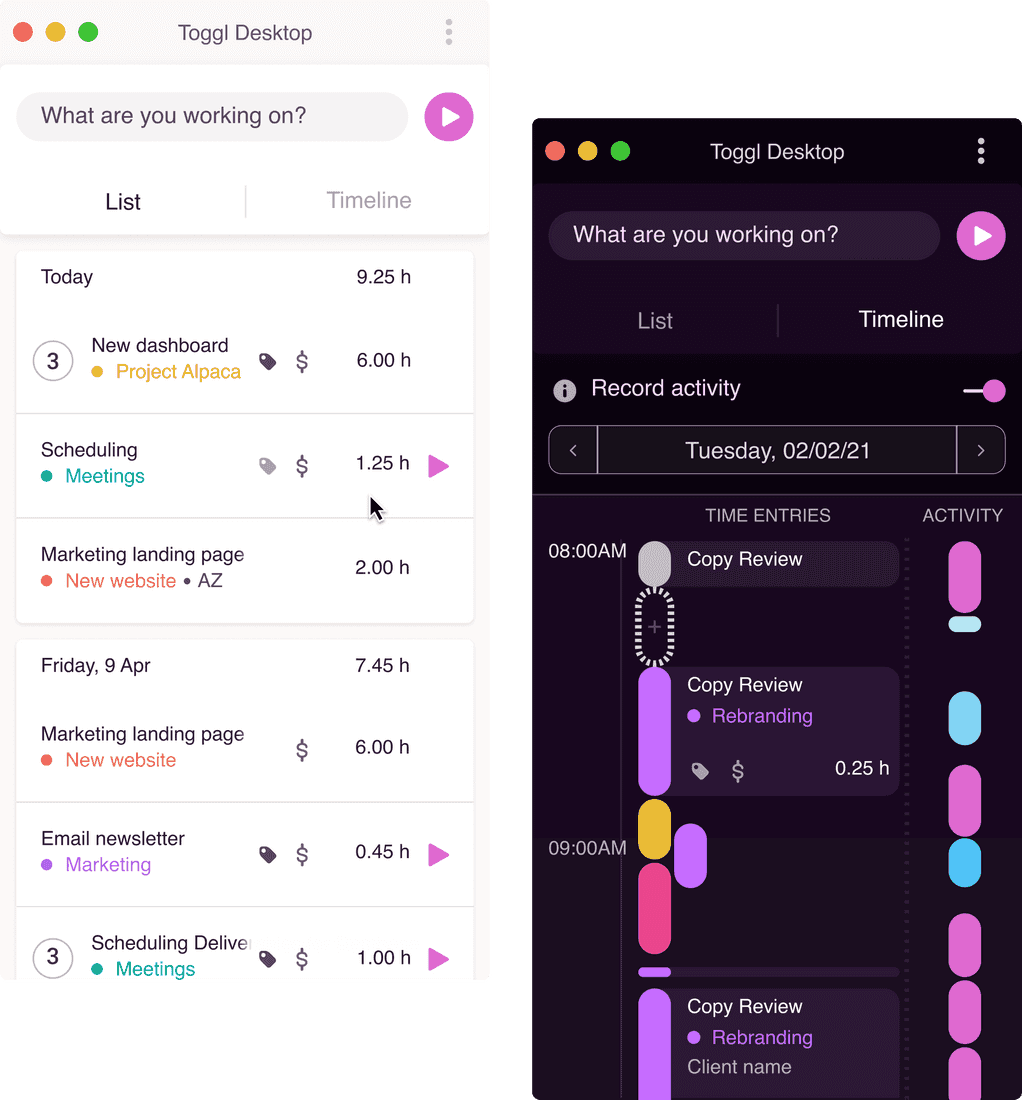

- #GET TIMER FOR MAC HOW TO#
- #GET TIMER FOR MAC FOR MAC#
- #GET TIMER FOR MAC PASSWORD#
- #GET TIMER FOR MAC FREE#
Double-click the shutdown desktop shortcut to open Terminal, prompting you to type your user password.Next, punch out chmod 774 shutdowns and hit enter. Launch Terminal and alter directory to Desktop by entering cd ~/Desktop and hit enter.Before hitting Save, ensure you uncheck the box near If no extension is provided, use. Hold down return twice, and type the shutdown timer command in the third line like sudo shutdown –h + 10.This signals the operating system to execute the command with Bash. On the top of the text window, enter the following: #!/bin/bash.If the document is larded with coding jargon, press command + shift + T to access plaintext. This thrusts a blank text document into view. Launch TextEdit and click on New Document.If you have a frequent shutdown timer, having a desktop shortcut for it makes life easier. Generate A Shutdown Timer Desktop Shortcut Try it to give your machine a new lease of life in a single click. PowerMyMac isolates large or old files, iTunes junk, photo clutter, Mail attachments, and unneeded content.
#GET TIMER FOR MAC FREE#
Just like a shutdown timer, this Mac maintenance tool will give your Mac a regular cleanup to free up gigabytes of purgeable storage space, optimize performance and promote rapid memory retrieval. It’s a multi-tool featuring a performance monitor, memory retriever, optimizer, and smart cleanup technology. Tip: Give your Mac performance boost like doses of salt with PowerMyMac to steer clear of issues associated with your shutdown.

You can also cancel a preset timer, jot down its pid and type the following command in the terminal, viz. It will give you a process ID called pid in the form of three to four digit number. The shutdown timer created gives you the specific time and date when the shutdown/restart/sleep process will apply. Closing the window or pressing Control + C in the page revokes the shutdown command. Once the command starts running, the Terminal will portray the time of the next shutdown. For a restart or sleep timer, the commands look like this:
#GET TIMER FOR MAC PASSWORD#
This command may prompt you to enter the administrator password before executing the instructions. This command will launch the shutdown process after fifteen minutes simply substitute the “ 15” in the foregoing command with any number of minutes. If you wish to bring your Mac to a standstill in 15 minutes-then enter the following command: If you recall this shutdown path, you can just launch Terminal and type the command to craft a shutdown timer. You may want to broaden your shutdown timer possibilities but the above options give you everything you need.
#GET TIMER FOR MAC HOW TO#
Mac Shutdown Timer: How to Make Mac Automatically Shut Down Use Terminal Command
#GET TIMER FOR MAC FOR MAC#
People Also Read: Getting the Best Duplicate Files Cleaner for Mac Chrome Running Slow on Mac? Here is How to Fix! Part 1. Other Alternatives to Adjust Time for Your Mac Part 4. Generate A Shutdown Timer Desktop Shortcut Part 3. Mac Shutdown Timer: How to Make Mac Automatically Shut Down Part 2. Apple boasts features that allow you to predetermine shutdown at a specific time or within intervals or hours elapsed.Ĭontents: Part 1. In addition, you can shut down via the Terminal. The Mac App Store has a number of options, including Timer Boom and Shutdown Timer. Like always, Apple offers a Mac shutdown timer to automate the process. A time-consuming process like installing updates will require you to wake up at dead of night and log off your device. Otherwise, this is a non-trivial problem to solve.Sometimes, you wish you could automatically set your Mac to shut down, sleep or restart. However, if you have a program that is itself "kernel-like" in nature, with a big action loop at its core, you may find it best to keep track of unused cycles yourself. Run "sar" in another process (it's like a stdout-printing version of top), look for a result you want, and send a signal to the process.Īlternately, the other solution posted regarding "ioreg". Look up the details on the manpage or in section 8.15 of "Advanced Programming in the UNIX Environment" - Stevens - the bible for these kinds of questions. There's a more technical answer if you really need to be doing the data collection while the program is running - I'll take a look at the unix book for you. If you mean the time spent during the course of a program, after the program is done, then the easiest thing to do is run the unix "time" function: # echo foo


 0 kommentar(er)
0 kommentar(er)
